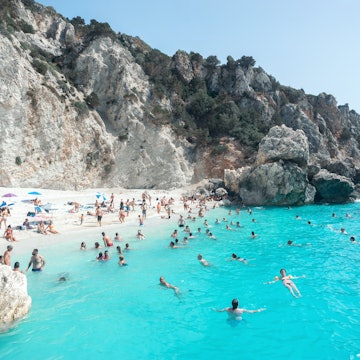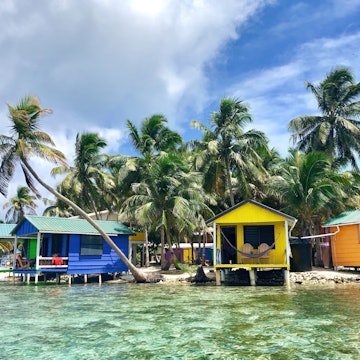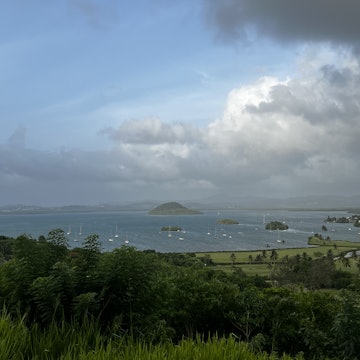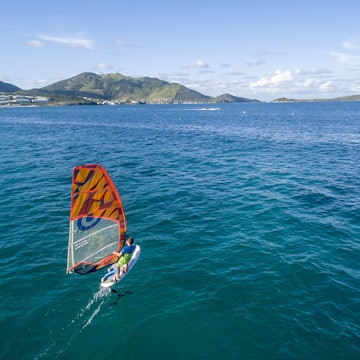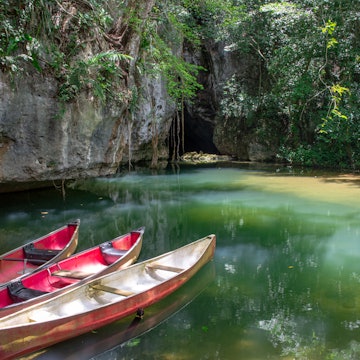

Isla Verde resort in San Juan, Puerto Rico. Maridav/Shutterstock
With breathtaking oceanfront vistas, lush, breezy mountains, tropical rainforest, some pumping nightlife and one of the coolest food scenes in the Caribbean, Puerto Rico is all about enjoying the ride.
Learning a few of the island's unspoken social rules will go a long way toward helping you enjoy the vibe and understanding what makes Puerto Rico such a memorable spot for your vacation.
So whether you're hiking, surfing, zip-lining, boogie boarding or heading to one of the island's many festivals, here are our top tips on planning, etiquette and health and safety in Puerto Rico.
1. Check visa rules and passport requirements
While Puerto Rico is its own country, and local laws and customs differ from those of the US, the island is still a Commonwealth of the USA. This means US citizens don’t require a passport or a visa for entry.
Flights from the US are considered domestic, so you won’t go through customs when you arrive on the island and you won’t need to present a visa or pay a departure tax when you leave.
However, visitors must still pay the local tax of 11.5% on goods and services and you’ll be required to pass through the US Department of Agriculture channel at the airport before you leave, just to make sure you don’t bring fruits or vegetables or open food packets back into the US.
Non-US citizens taking a trip to Puerto Rico may need to apply for a 90-day visa before arrival, but countries that are part of the US Visa Waiver Program won’t need a visa thanks to international agreements. Check out this list to see what countries are part of the program and which have visa requirements.

2. Rent a car for long-distance road trips
When planning a trip to Puerto Rico, it's necessary to know that public transportation often falls short. Keep this in mind when deciding how long you want to stay.
The bulk of the San Juan metropolitan area – comprising the municipalities of San Juan, Bayamón and some parts of Carolina – is served by buses run by Autoridad Metropolitana de Autobuses (AMA), but the routes and pickup times are unreliable.
A road trip to the beautiful central mountain range, beaches of the northwest or southwestern desert requires a rental car. Cars can go up or down in price depending on the season, but you’ll get more out of your trip if you’re driving as you can make all the stops you need to take photographs at the amazing miradores (lookout points) sprinkled along Expressway 22 in the north or Route 66 in the northwest.

3. Don’t expect to see the whole island in one trip
Puerto Rico is 100 miles long and 35 miles wide, but don't let that fool you – the geography is anything but small in scale and there are many things you'll want to do. While a lot of tourist attractions and popular bars are in San Juan, real Puerto Rican culture is often best encountered in places outside of the metropolitan area.
White, sandy beaches are only one of the natural wonders you’ll experience here. Visitors can marvel at bioluminescent bays, caves that are thousands of years old and adorned with Taino hieroglyphics, and a wealth of rivers, canyons, high mountain peaks and salt flats.
It can take up to 3 hours to get from one side of the island to the other, and there are bound to be some roads that are either closed or temporarily closed for repairs. Traveling from one end of the island to the other can be a breeze if you use the expressways, or it can be a long rollercoaster ride via the island’s beautiful backroads.
Expect delays due to construction and improvement work along major highways, and be prepared for epic traffic jams during peak commuter hours, 6–9am and 4–7pm.

4. Pack bathing suits and your Sunday best
As a former Spanish colony, Puerto Rico was left with a legacy of Spanish practices, including widespread Catholicism, also common in other nearby Latin American countries such as Cuba and the Dominican Republic.
Perhaps unsurprisingly, Puerto Ricans tend to be quite conservative when it comes to dress codes and the places where these apply. In Old San Juan – where the governor’s mansion, La Fortaleza is located – it’s common to see workers in full suits or long shirts regardless of the tropical heat.
Flip-flops are usually reserved for the beach or super casual situations, such as trips to kiosks and beachside restaurants or riverside walks. You’ll stick out like a sore thumb if you show up at the main mall, Plaza las Américas, in your swimsuit.
Some clubs have dress codes, too, requiring men and women to wear smart shoes. Pack your bathing suit and flip-flops, but also bring some dressy outfits for going out at night and clothes that cover the knees and shoulders if you plan to visit any religious sites.
5. Buy tickets ahead for tours and attractions
If you’re planning to join a snorkeling trip, go on a catamaran tour, or eat at the 1919 Restaurant in the Condado Vanderbilt Hotel, book your spot ahead of time.
Trust us, planning ahead will be a game-changer.
6. Don’t expect everyone to speak English
Regardless of Puerto Rico’s modern political status, Spanish remains the language most widely spoken on the island. While you’ll find plenty of Puerto Ricans who speak near-perfect English, you're most likely to meet these people in the metropolitan area and peripheral cities such as Caguas, Bayamón, Guaynabo, Carolina and Trujillo Alto.
Even in Old San Juan, where restaurant and tourism industry workers will speak to you in English without a problem, it’s considerate to ask someone if they speak English before continuing. If you're venturing outside of the main tourist zones, brush up on your Spanish, be patient and courteous, and you’ll make fast friends with island residents.

7. Discuss politics with care
Conversations about the island's political situation can get heated and emotional – the subject of the islands' status is a controversial one, and Puerto Ricans' views vary widely. The best approach is to come to these conversations with an open mind and remember that Puerto Rican politics and US politics are incredibly different. There's much to be gained by just listening to Puerto Ricans' stories and hopes for what they want to see the island become in the future.

8. Be ready to sample the full range of Puerto Rican cuisine
Don’t let the tasty street snacks – pernil (roast pork), alcapurrias (stuffed, fried fritters), and bacalaitos (codfish fritters) – steal all your attention. While these traditional and delicious foods are prevalent, Puerto Rican cuisine is vast and complicated, with influences that range from West Africa to Spain and Asia.
You’ll find vegetarian-friendly restaurants such as vegan cafe El Grifo in Caguas and 100% HP in San Juan. Then there's the fine dining experience at the internationally renowned 1919 Restaurant in the Condado Vanderbilt Hotel.
Puerto Rico has a host of extraordinarily talented home-grown chefs and wonderful influences from other countries, such as the island's ubiquitous Puerto Rican-Chinese restaurants, which are typically family-run and cozy. So come for the mofongo (mashed fried plantains) and pernil, but stay for the surprising breadth of culinary experiences.
9. Get ready for the real “island time”
It’s tempting to think of Puerto Rico as a laid-back escape where the majority of the time is spent going to the beach or hanging around in the sun. The reality is that the island is centered on a busy, metropolitan city, with people rushing to work early in the morning and traffic jams at the end of long workdays.
If you need to do any errands, plan ahead, because government offices, fast food restaurants, bakeries and supermarkets will almost always have long lines. Making a scene or looking exasperated because the cashier took a little bit more time than usual will most likely earn you some dirty looks.
You’re on vacation, so go with the flow. You’ll soon learn the art of Puerto Rican small talk and taking a breather while you wait.

10. Be aware of hurricane season
Hurricane season in the Caribbean runs from June 1 to November 30. While Puerto Rico isn’t typically hit by hurricanes, storms can be devastating when they do arrive.
This is not to say you can’t travel during hurricane season – indeed, June to November is one of the most wonderful seasons on the island. Just keep an eye on the news and monitor your favorite weather app for warnings of approaching storms.

11. Exercise care on Puerto Rico's beaches
Beaches in Puerto Rico are beautiful, with crisp white sand and crystal clear waters for all to enjoy. However, there are usually no lifeguards on duty, and if you’re staying on the Atlantic coast in the north, the ocean tends to be choppier compared to the mild waves of the Caribbean in the south. Exercise caution when swimming with children; if you see a patch of water or a beach that’s completely empty, it's usually for a reason. This could be jellyfish, spiky sea urchins or strong undercurrents.
You can usually spot rip currents and whirlpools by the appearance of the surface of the water, which will look different from the water where waves are moving toward the beach. Don’t panic if you do get caught in one – the National Oceanic and Atmospheric Administration (NOAA) recommends conserving your energy and swimming parallel to the shore until you get out of the current. While rip currents can be deadly, they rarely pull people under the water, just away from the shore.
When visiting the beach, don’t bring flashy jewelry or expensive cameras and don't leave purses out in the open, as pickpockets can be an issue on high-traffic tourist beaches such as Ocean Park and Isla Verde.
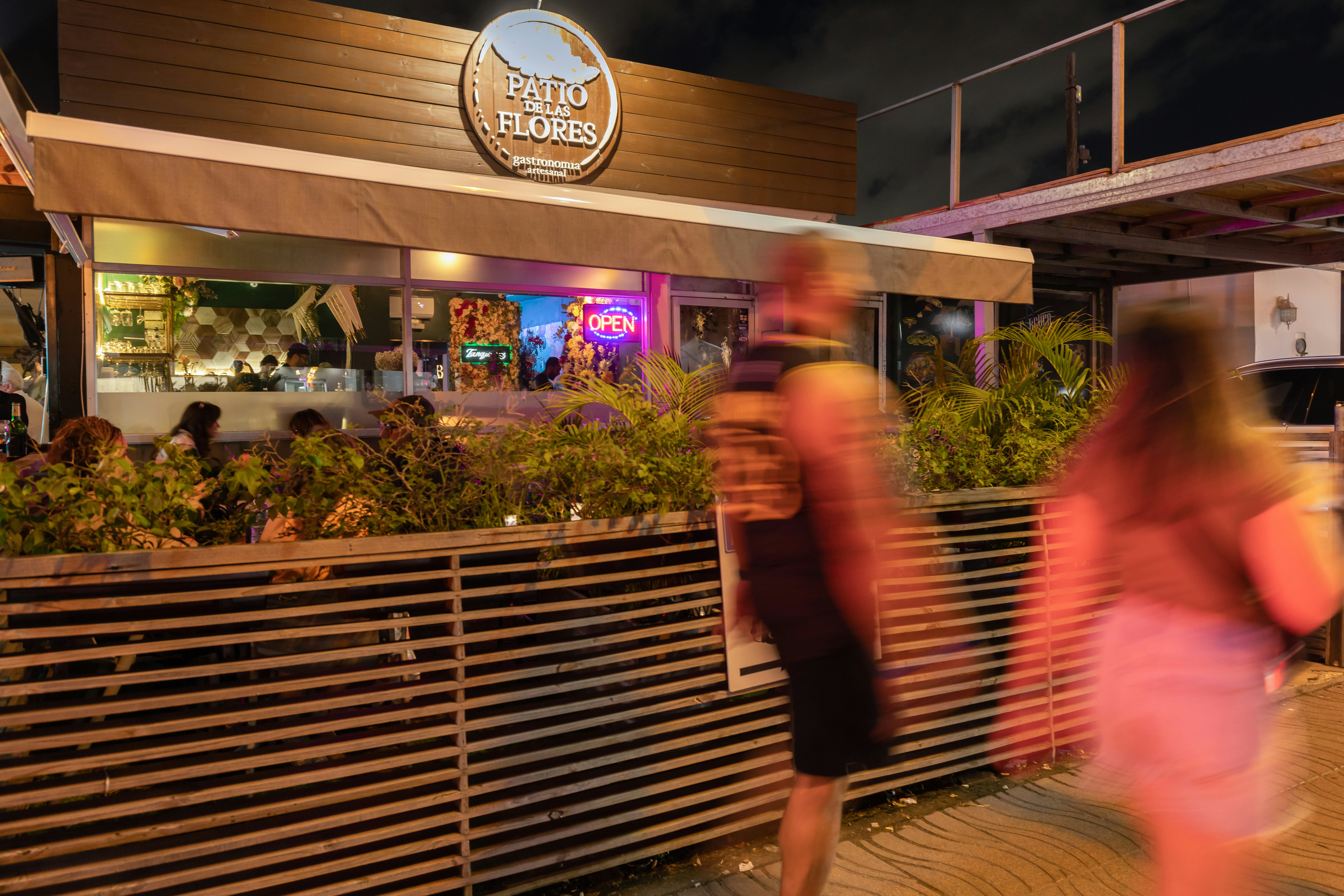
12. Use the same caution as in any big city
Puerto Rico is generally safe for travelers but keep an eye out for risks such as dark, empty streets in Old San Juan and other San Juan neighborhoods. In particular, exercise caution when venturing out to clubs in Santurce – this is a high-crime area at night. Research the neighborhood where you’re staying and try to speak to someone who already lives there or has visited to gauge safety levels.
Some beaches in urban areas aren’t safe to hang out at night either. There’s no police presence, and these beaches tend to be hidden behind hotels and residences with little to no lighting, providing an excellent opportunity for petty crime.

13. Don’t skimp on sunblock and bug spray
Caribbean sunlight can hit hard if you’re not used to it. The islands are close to the equator and get hit directly by the sun, with 12–4pm being the most punishing hours of the day. Don’t skimp on sunblock – aim for SPF50 or higher – and you'll avoid nasty burns.
Any local will tell you that bugs – especially mosquitoes – are a nuisance on summer nights. In the worst cases, they can also carry tropical diseases such as dengue fever, Zika and chikungunya. Your best protection against bugs is to wear a lot of DEET-based bug spray, especially in areas close to bodies of sitting water, such as mangroves, lagoons and lakes.






